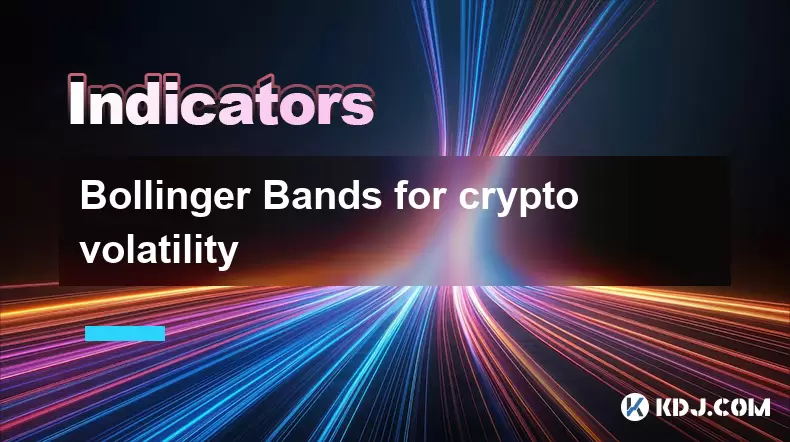-
 Bitcoin
Bitcoin $118,698.3676
0.16% -
 Ethereum
Ethereum $3,428.4877
5.97% -
 XRP
XRP $3.2496
9.52% -
 Tether USDt
Tether USDt $1.0002
0.00% -
 BNB
BNB $725.6930
4.36% -
 Solana
Solana $174.8923
4.52% -
 USDC
USDC $0.9997
-0.02% -
 Dogecoin
Dogecoin $0.2139
6.02% -
 TRON
TRON $0.3155
4.62% -
 Cardano
Cardano $0.8045
7.12% -
 Hyperliquid
Hyperliquid $46.6582
-1.72% -
 Stellar
Stellar $0.4676
0.80% -
 Sui
Sui $4.0143
0.38% -
 Chainlink
Chainlink $17.1546
2.97% -
 Hedera
Hedera $0.2458
3.27% -
 Bitcoin Cash
Bitcoin Cash $496.5967
-0.06% -
 Avalanche
Avalanche $22.8813
3.13% -
 Shiba Inu
Shiba Inu $0.0...01439
3.42% -
 UNUS SED LEO
UNUS SED LEO $8.8389
0.42% -
 Toncoin
Toncoin $3.2113
2.82% -
 Litecoin
Litecoin $101.2646
4.24% -
 Polkadot
Polkadot $4.2262
2.32% -
 Monero
Monero $340.4295
2.92% -
 Pepe
Pepe $0.0...01365
2.92% -
 Uniswap
Uniswap $8.9702
-2.78% -
 Bitget Token
Bitget Token $4.7675
2.00% -
 Dai
Dai $0.9998
-0.02% -
 Ethena USDe
Ethena USDe $1.0003
-0.04% -
 Aave
Aave $324.6394
-2.11% -
 Bittensor
Bittensor $433.6051
-0.88%
Bollinger Bands for crypto volatility
Bollinger Bands help crypto traders gauge volatility and potential price reversals by showing overbought or oversold conditions relative to a moving average.
Jul 12, 2025 at 08:42 pm

Understanding Bollinger Bands in the Context of Cryptocurrency
Bollinger Bands are a popular technical analysis tool developed by John Bollinger in the 1980s. Originally designed for stock markets, they have since been widely adopted across various financial instruments, including cryptocurrencies. The core function of Bollinger Bands is to measure price volatility and identify potential overbought or oversold conditions. In the crypto market, where price swings can be extreme and sudden, Bollinger Bands provide traders with visual cues about market dynamics, helping them make more informed decisions.
The indicator consists of three lines: a simple moving average (SMA) in the middle, typically calculated over 20 periods, and two outer bands that are set at a certain number of standard deviations away from the SMA—usually two. These bands dynamically adjust to price movements, expanding during high volatility and contracting during low volatility.
How Bollinger Bands Reflect Volatility in Crypto Markets
In the world of crypto trading, volatility is not just common—it's expected. Bollinger Bands help quantify this volatility by showing how far prices deviate from the average. When the bands widen, it indicates an increase in price volatility, often signaling significant market events such as news releases, regulatory changes, or large trades affecting asset prices.
Conversely, when the bands contract, known as the "Bollinger Squeeze," it suggests decreasing volatility and often precedes a sharp price movement in either direction. Traders monitor these squeezes closely in crypto markets because they may indicate imminent breakouts or breakdowns, especially in assets like Bitcoin or Ethereum that experience cyclical volatility patterns.
Interpreting Price Action Relative to Bollinger Bands
One of the most common ways traders use Bollinger Bands in cryptocurrency trading is to assess whether an asset is overbought or oversold. When the price touches or moves above the upper band, it may suggest the asset is overbought, potentially signaling a reversal or pullback. Conversely, when the price hits or dips below the lower band, it could imply oversold conditions, possibly indicating a bounce or upward correction.
However, it’s crucial to understand that price touching a band does not automatically mean a reversal will occur. In strong trending markets, prices can ride along the upper or lower bands for extended periods. This behavior is frequently observed in altcoins experiencing rapid growth or steep declines, making it essential to combine Bollinger Bands with other indicators for confirmation.
Using Bollinger Bands in Conjunction with Other Indicators
Relying solely on Bollinger Bands for trading decisions in the volatile crypto market is risky. Most experienced traders integrate the bands with other tools like Relative Strength Index (RSI), Moving Average Convergence Divergence (MACD), or volume indicators to confirm signals and filter out false ones.
For example, if the price touches the upper Bollinger Band and the RSI is above 70, this combination strengthens the case for an overbought condition and possible downward movement. Similarly, if the price touches the lower band and the MACD line crosses above the signal line, it might indicate a bullish reversal.
Here’s a step-by-step guide on combining Bollinger Bands with RSI:
- Add both Bollinger Bands and RSI to your charting platform
- Look for price action near the upper or lower bands
- Check the RSI value at the same time—if it's above 70 or below 30, it supports the Bollinger Band signal
- Place trades based on confluence between the two indicators
This multi-indicator approach helps reduce false signals and improves the probability of successful trades.
Customizing Bollinger Bands for Different Cryptocurrencies
Not all cryptocurrencies behave the same way. Bitcoin tends to have different volatility characteristics compared to smaller-cap altcoins. As a result, it's important to tailor Bollinger Band settings to suit the specific asset being traded.
While the default setting is a 20-period SMA with two standard deviations, some traders adjust the period length depending on the timeframe they're analyzing. For instance:
- Short-term traders may use a 10-period setting for faster reactions
- Longer-term traders might opt for a 50-period setting to smooth out noise
Additionally, changing the number of standard deviations can also impact sensitivity. Increasing it to 2.5 or 3 may reduce false signals in highly volatile coins, while lowering it to 1.5 might capture tighter ranges in less volatile assets.
Frequently Asked Questions
What happens when the price stays outside the Bollinger Bands?
When the price remains consistently outside the upper or lower bands, it suggests a strong trend. This doesn't necessarily mean a reversal is imminent; instead, it indicates that the current momentum is powerful enough to sustain movement beyond typical volatility levels.
Can Bollinger Bands be used on all timeframes in crypto trading?
Yes, Bollinger Bands are adaptable to any timeframe, from minute charts used in scalping to daily or weekly charts for long-term strategies. However, signals tend to be more reliable on higher timeframes due to reduced noise and fewer false signals.
Is there a difference between Bollinger Bands and Keltner Channels?
Yes, while both are volatility-based indicators, Keltner Channels use the Average True Range (ATR) to determine channel width, whereas Bollinger Bands rely on standard deviation. Keltner Channels are generally smoother and less reactive to sudden price spikes, which can be beneficial in erratic crypto markets.
Do Bollinger Bands repaint or lag behind price?
Bollinger Bands are calculated using historical data, so they inherently lag to some degree. They do not repaint once plotted, but their reliance on past prices means they respond after the fact rather than predictively. This characteristic should be considered when interpreting signals.
Disclaimer:info@kdj.com
The information provided is not trading advice. kdj.com does not assume any responsibility for any investments made based on the information provided in this article. Cryptocurrencies are highly volatile and it is highly recommended that you invest with caution after thorough research!
If you believe that the content used on this website infringes your copyright, please contact us immediately (info@kdj.com) and we will delete it promptly.
- Silver Breaks 14-Year High: What's Driving the Rally?
- 2025-07-17 22:50:13
- Grok AI, Meme Coins, and Dogecoin: What's the Hype in 2025?
- 2025-07-17 23:10:11
- C2 Blockchain, DOG Coins, and Acquisition: A Meme-Native Bitcoin Asset
- 2025-07-17 20:30:12
- DeFi Evolution: Hyperion, HYPE Token, and the Hyperliquid Ecosystem
- 2025-07-17 21:30:12
- BlockDAG's NO VESTING PASS: A Crypto Game Changer Amid CRO & ONDO Swings
- 2025-07-17 21:30:12
- Ethereum, Pepe, Crypto: Navigating the Wild West of Digital Assets
- 2025-07-17 20:30:12
Related knowledge

Advanced RSI strategies for crypto
Jul 13,2025 at 11:01am
Understanding the Basics of RSI in Cryptocurrency TradingThe Relative Strength Index (RSI) is a momentum oscillator used to measure the speed and chan...

Crypto RSI for day trading
Jul 12,2025 at 11:14am
Understanding RSI in the Context of Cryptocurrency TradingThe Relative Strength Index (RSI) is a momentum oscillator used to measure the speed and cha...

Crypto RSI for scalping
Jul 12,2025 at 11:00pm
Understanding RSI in the Context of Crypto TradingThe Relative Strength Index (RSI) is a momentum oscillator widely used by traders to measure the spe...

What does an RSI of 30 mean in crypto
Jul 15,2025 at 07:07pm
Understanding RSI in Cryptocurrency TradingRelative Strength Index (RSI) is a momentum oscillator widely used in cryptocurrency trading to measure the...

What does an RSI of 70 mean in crypto
Jul 13,2025 at 06:07pm
Understanding the RSI Indicator in Cryptocurrency TradingThe Relative Strength Index (RSI) is a widely used technical analysis tool that helps traders...

Does RSI work in a bear market for crypto
Jul 16,2025 at 01:36pm
Understanding RSI in Cryptocurrency TradingThe Relative Strength Index (RSI) is a momentum oscillator used by traders to measure the speed and change ...

Advanced RSI strategies for crypto
Jul 13,2025 at 11:01am
Understanding the Basics of RSI in Cryptocurrency TradingThe Relative Strength Index (RSI) is a momentum oscillator used to measure the speed and chan...

Crypto RSI for day trading
Jul 12,2025 at 11:14am
Understanding RSI in the Context of Cryptocurrency TradingThe Relative Strength Index (RSI) is a momentum oscillator used to measure the speed and cha...

Crypto RSI for scalping
Jul 12,2025 at 11:00pm
Understanding RSI in the Context of Crypto TradingThe Relative Strength Index (RSI) is a momentum oscillator widely used by traders to measure the spe...

What does an RSI of 30 mean in crypto
Jul 15,2025 at 07:07pm
Understanding RSI in Cryptocurrency TradingRelative Strength Index (RSI) is a momentum oscillator widely used in cryptocurrency trading to measure the...

What does an RSI of 70 mean in crypto
Jul 13,2025 at 06:07pm
Understanding the RSI Indicator in Cryptocurrency TradingThe Relative Strength Index (RSI) is a widely used technical analysis tool that helps traders...

Does RSI work in a bear market for crypto
Jul 16,2025 at 01:36pm
Understanding RSI in Cryptocurrency TradingThe Relative Strength Index (RSI) is a momentum oscillator used by traders to measure the speed and change ...
See all articles

























































































